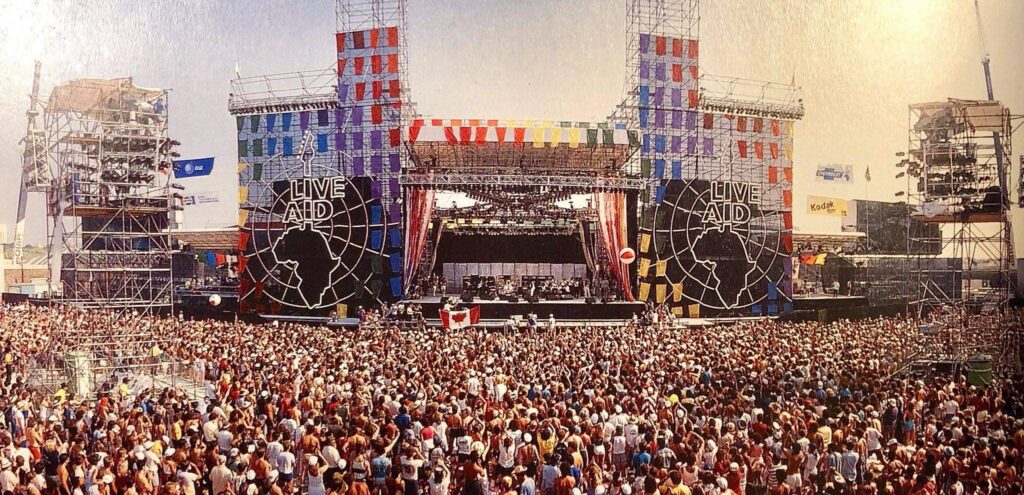If popular music in the eighties could be compared to anything at all, its best comparison would have to be a buffet restaurant. This era of pop music had some of the most diverse genres, taking the ground-breaking success of the seventies to new heights. With the backlash against disco and punk rock having peaked by the end of the seventies, the eighties witnessed an explosion of new music on the scene, including new sub-genres of heavy metal, synth-pop, new wave, and post-disco.
While it might seem like all this music popped up out of nowhere overnight, a large part of the reason why so many styles of music were becoming popular was due in large part to the rise of MTV, a twenty-four-hour music channel launched in 1981. MTV was responsible for helping these genres reach a mainstream audience by landing on the TV sets of millions of Americans. The popularity of the music video channel format even spread north across the border into Canada, where it influenced the launch of MuchMusic and MusiquePlus, its French counterpart.

With its album oriented rock focus in the early years of the channel, MTV helped give rise in popularity to heavy metal and two of its sub-genres, thrash and hair. Without MTV, New Wave of British Heavy Metal bands may not have had the success they did in North America. MTV also helped the early eighties Los Angeles metal scene by promoting hair and glam bands such as Motley Crue, Quiet Riot, Ratt and W.A.S.P. This trend continued into the mid and late eighties with acts like Bon Jovi, Poison, Cinderella and Twisted Sister, peaking with bands like Guns and Roses and Skid Row as the eighties were coming to a close.
While the eighties gave rise to the metal genre, there was another style of music that became quite popular. This style of music was known as synth-pop because it primarily used synthesizers and drum machines as its instruments. The popularity of synth-pop was enormous in the UK, eventually spilling over into the US in 1982 and becoming part of what’s known as the second British Invasion of music. The first wave of synth-pop bands from the UK included Duran Duran, Human League, Soft Cell and Depeche Mode. The second invasion also saw the popularity of acts like the Eurythmics, Boy George, Wham, Billy Idol, and Robert Palmer. These are but a few names that filled up the US Billboard charts.
Of course, this portrayal of the music that exploded in the eighties wouldn’t be complete if I didn’t mention the post-disco era. Like synth-pop, this style of disco incorporated synthesizers and drum machines into its sound while maintaining the dance-oriented theme of seventies disco. Pioneers of the post-disco era include none other than the king of pop himself, Michael Jackson and Madonna. By the mid eighties, the genre had morphed into dance-pop, or what is better known today as dance music. The rise of dance music in the eighties dominated the airwaves with acts like the Pet Shop Boys, girl group Bananarama, Debbie Gibson and Tiffany. Even David Bowie got slotted into this category with his hit song Let’s Dance.

Finally, if any moment could define the variety of music in the eighties, or at least the first half of it, it would have to be the Live Aid concert held on July 13th, 1985. Billed as a benefit concert to raise money and awareness for the Ethiopian famine, it was held at two locations, London’s Wembley Stadium and John F. Kennedy Stadium in Philadelphia and broadcast live on TV. The event featured a wide range of artists in all the genres mentioned and others, including folk, rap and blues. It was probably the most divergent crowd of fans ever assembled in the history of popular music.
There is so much I haven’t mentioned, including mainstream rock that continued to flourish and a cultural movement called hip hop that was gaining momentum, with rap music getting more popular as the decade drew to an end.
While I believe the seventies produced some of the greatest rock acts and albums in the genre’s history, upon further reflection, the eighties weren’t all that bad. Actually no, that’s not true. Some of it was absolutely unbearable.
Let’s just say there was definitely something for everyone, no matter what your taste in music and that’s why I think it will go down in history as the smorgasbord of popular music. Its influence on the next decade of bands and artists can not be understated as popular music became even more categorized, ultimately resulting in the incredibly wide range of music we have at our fingertips today.

Be First to Comment